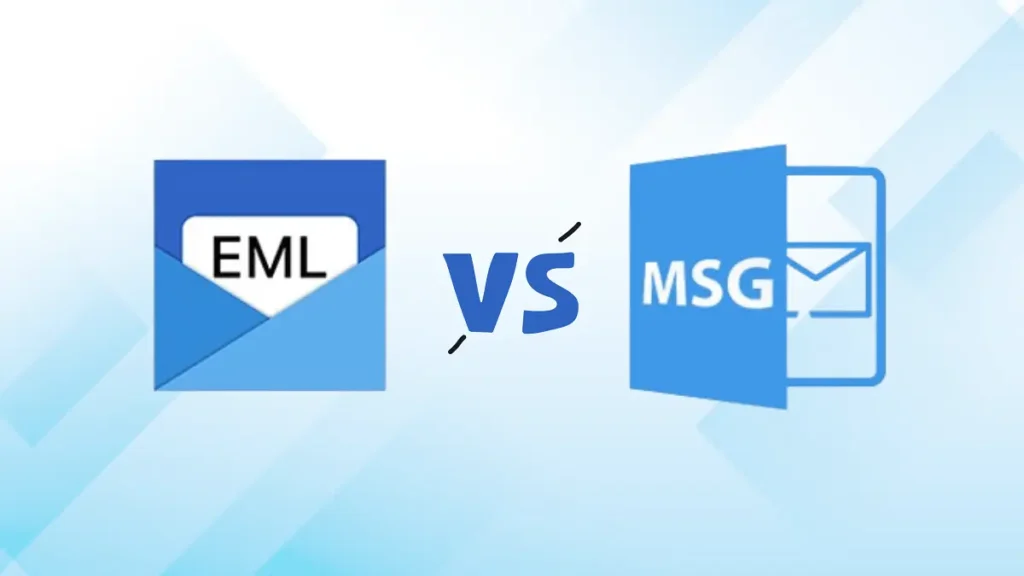The “Send to Mail Recipient” feature in Windows is a handy tool allowing users to attach files to emails directly from the context menu, saving time and effort. However, many Windows users encounter issues where this option fails to work. If you’re struggling with the “Send to Mail Recipient Not Working” problem, this blog will help you understand the cause and provide effective solutions to resolve it.
Why Is “Send to Mail Recipient” Not Working?
The underlying reasons for this issue can vary, but the most common culprits are:
- Default Email Client Misconfiguration: If no email client is configured as the default, the feature will not work.
- Compatibility Issues with Mail Apps: The Windows built-in Mail app is incompatible with the “Send to Mail Recipient” feature. This option requires a classic desktop email client that supports MAPI (Messaging Application Programming Interface), such as Microsoft Outlook or Thunderbird.
- Corrupted Mail Recipient Shortcut: The shortcut in the SendTo folder may be deleted or corrupted, rendering the feature unusable.
- Synchronization Errors in Outlook: Improper registry configurations for Outlook can also cause issues with this feature.
- Outdated or Corrupted Office Installation: Problems within your Microsoft Office installation could affect Outlook’s functionality with this feature.
How to Fix “Send to Mail Recipient Not Working”
Here are step-by-step fixes you can implement to resolve this issue:
1. Set a Default Email Client
If you haven’t set up a default email client, Windows won’t recognize any program to handle the “Send to Mail Recipient” requests. Here’s how to configure it:
- Press Windows Key + I to open Settings.
- Navigate to Apps > Default Apps.
- Under the “Email” section, choose an email client like Microsoft Outlook, Mozilla Thunderbird, or Mailbird.
Restart your system to apply changes and check the feature again.
2. Use a Compatible Desktop Email Client
The “Send to Mail Recipient” option does not work with Store apps such as Windows Mail. Install and set up a compatible client, such as:
- Microsoft Outlook
- Mozilla Thunderbird
- Mailbird
- Mailspring
After installation, ensure that the preferred email client is set as the default, as described in Step 1.
3. Recreate the Mail Recipient Shortcut
If the Mail Recipient shortcut in the SendTo folder is missing or corrupted, follow these steps to recreate it:
- Navigate to the SendTo folder:
- Open File Explorer and enable “Hidden Items” under the View tab.
- Go to
C:\Users\Default\AppData\Roaming\Microsoft\Windows\SendTo.
- Copy the Mail Recipient file from the default location.
- Paste it into your user-specific folder at
C:\Users\<YourUsername>\AppData\Roaming\Microsoft\Windows\SendTo.
After completing these steps, check if the issue is resolved.
4. Resolve Outlook-Specific Issues
If you’re using Microsoft Outlook and still face problems, the root cause might be corrupted registry subkeys or synchronization errors. Here’s how to fix it:
- Open Registry Editor by pressing Windows Key + R, typing regedit, and hitting Enter.
- Navigate to
Computer\HKEY_LOCAL_MACHINE\SOFTWARE\Clients\Mail\Microsoft Outlook.
- Delete all subkeys belonging to Microsoft Outlook.
- Restart your system and relaunch Outlook to reinitialize required configurations.
5. Repair or Reinstall Microsoft Office
Sometimes, issues with Microsoft Outlook stem from a corrupted Office installation. To repair it:
- Press Windows Key + R, type appwiz.cpl, and press Enter.
- Locate Microsoft Office in the program list.
- Right-click and select Change > Quick Repair.
- If the issue persists, opt for Online Repair instead.
Restart your device and test the functionality again.
6. Use the “Share” Option as an Alternative
If all else fails, you can use the “Share” option in the context menu as a workaround:
- Right-click on the file you wish to send.
- Select Share from the context menu.
- Choose the Mail app or an alternative email client.
This method bypasses the “Send to Mail Recipient” option entirely and ensures you can still share files via email.
Also Read: Why & How to Remove Shared Mailbox from Outlook?
Conclusion
Ugh, having that “Send to Mail Recipient” option suddenly stop working is a real pain, right? It’s usually because your computer’s a bit confused about which email program to use. But don’t worry, getting it back on track is usually pretty straightforward. We’ll walk you through setting a default email app, making sure you have a compatible one installed, and even show you how to recreate that handy Mail Recipient shortcut. These steps should get things working smoothly again. And if you’re still stuck, there’s always the “Share” option as a backup, or you could try repairing your Microsoft Office installation – that often does the trick!
Try out these solutions, and let us know which fix worked for you!
Common FAQs About “Send to Mail Recipient Not Working”
Q1. Can I Use the Mail App for This Feature?
No, the Windows Mail app does not support the “Send to Mail Recipient” function due to its lack of MAPI support. Switch to a desktop email client like Outlook or Thunderbird.
Q2. Does This Issue Affect All Windows Versions?
Although most reports are from Windows 10 and 11 users, this issue can also occur on older versions like Windows 7 after certain updates.
Q3. Why Does the Option Sometimes Disappear?
The Mail Recipient shortcut might be missing or corrupted in the SendTo folder on your system. Recreating the shortcut should resolve this issue.




